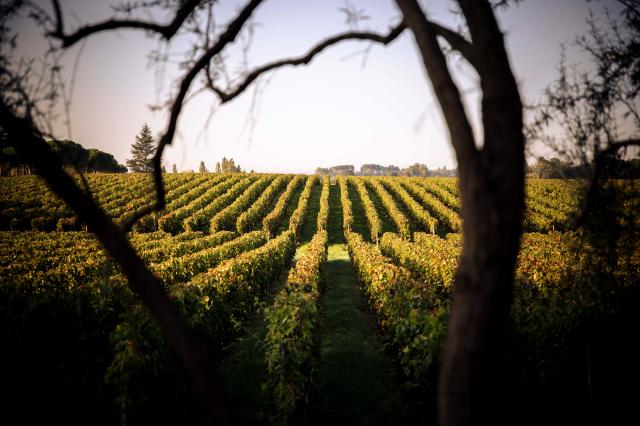"The beautiful landscape and the unique character of the wine were a source of inspiration for the great painter Odilon Redon”.
Château Peyre-Lebade has a rich history that is graced by several illustrious figures. There are records dating back to the twelfth century of vines being grown on the site by the Cistercian monks at the Abbey of Vertheuil. The great painter Odile Redon lived and painted many of his most famous works at the property, which provide a wonderful reflection of the site's charm. By 1979, the property had fallen into a state of disrepair and was acquired by Baron Edmond de Rothschild, who already owned the neighbouring properties of Château Clarke and Château Malmaison, located in Listrac and Moulis, respectively. Chateau Peyre-Lebade is now an integral part of the properties belonging to Edmond's son, Baron Benjamin de Rothschild, and Domaines Barons de Rothschild (Lafite) handles the marketing of the wines.
The 55 hectare vineyard is planted with Merlot (64%), Cabernet Sauvignon (24%) and Cabernet Franc (12%). The soil consists of limestone and well-drained clay-limestone. The property's name almost certainly comes from this limestone-rich geology. Peyre-Lebade means "pierre levée" or "raised stone", and there is an old limestone quarry on the site that probably served to provide limestone for the construction of the neighbouring villages.
The 55 hectare vineyard is planted with Merlot (64%), Cabernet Sauvignon (24%) and Cabernet Franc (12%). The soil consists of limestone and well-drained clay-limestone. The property's name almost certainly comes from this limestone-rich geology. Peyre-Lebade means "pierre levée" or "raised stone", and there is an old limestone quarry on the site that probably served to provide limestone for the construction of the neighbouring villages.

Presentation
Château Peyre-Lebade wines feature the fruity and fleshy characteristics specific to the Haut-Médoc appellation. They are nonetheless distinguished by the high Merlot content, which makes them particularly supple
The vintage
After a quite cool spring and a late start to the growing season, the months of July, August and September saw a rather sustained period of drought, leading to small yields (40hl/ha) and small-berried grapes, naturally rich and concentrated.
Varietals
Merlot : 70%
Cabernet sauvignon : 30%
Cabernet sauvignon : 30%
Tasting
Colour: very attractive intense crimson colour, deep purple at the rim.
Nose: ripe red fruit (cherry, blackcurrant, plum) with hints of cinnamon, vanilla and liquorice.
Palate: with a soft initial attack, the palate is full bodied and delicious with concentrated tannins and a persistent, long fruity finish.
Ageing: this wine will benefit from ageing. It can be tasted as from 2013 but will benefit from a few extra years of cellaring under good storage conditions. Its ageing potential is about 10 years.
Nose: ripe red fruit (cherry, blackcurrant, plum) with hints of cinnamon, vanilla and liquorice.
Palate: with a soft initial attack, the palate is full bodied and delicious with concentrated tannins and a persistent, long fruity finish.
Ageing: this wine will benefit from ageing. It can be tasted as from 2013 but will benefit from a few extra years of cellaring under good storage conditions. Its ageing potential is about 10 years.
